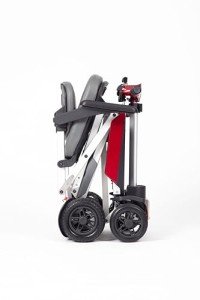The History Of Mobility Devices In 10 Milestones

Understanding Mobility Devices: Enhancing Independence and Quality of Life
In today's busy world, the desire for mobility is universal. However, specific medical conditions or age-related challenges can hinder motion, resulting in an ongoing look for support. Mobility devices work as important tools to improve independence, improve lifestyle, and enable people to engage fully in their communities. This post offers a thorough introduction of mobility devices, including their types, functions, choice requirements, and more.
Kinds Of Mobility Devices
Mobility devices range from basic aids to complex devices, tailored to satisfy numerous requirements. Below is a table summarizing common kinds of mobility devices:
| Type of Device | Description | Suitable For |
|---|---|---|
| Walkers | Four-legged assistance devices that offer remarkable stability while walking. | People requiring additional support. |
| Walking canes | Single or three-legged sticks that improve balance and support walking. | Those with slight mobility problems. |
| Wheelchairs | Seats mounted on wheels, offered in manual and electric versions. | Individuals with restricted or no mobility. |
| Scooters | Electric automobiles created for outdoor use and ease of navigation. | Those who can't walk long distances. |
| Crutches | Devices that assist people move weight away from an injured leg. | Individuals recovering from leg injuries. |
| Rollators | Walkers with wheels, seats, and brakes for enhanced mobility. | Users needing rest choices while walking. |
| Raise Chairs | Reclining chairs that help users in standing and taking a seat. | Seniors or those with mobility restraints. |
| Mobility Scooters | Small electric vehicles for limited mobility, often used outdoors. | People needing help over cross countries. |
Key Features of Mobility Devices
When choosing a mobility device, several key features must be thought about to guarantee optimal performance and ease of use:
- Weight Capacity: Understanding the device's weight limitation is crucial for security and efficiency.
- Adjustability: Devices must be adjustable in height and width to fit the user comfortably.
- Mobility: Lightweight and foldable options are important for users who travel or require transport.
- Stability and Safety: Look for functions like anti-tip wheels and sturdy structures to boost safety.
- Alleviate of Use: Simple mechanisms and user-friendly designs can make a considerable distinction in day-to-day usage.
- Convenience: Ergonomic styles and padded seats can improve the user experience.
Choosing the Right Mobility Device
Picking the ideal mobility device can be a difficult task. Here are some actions to guide the decision-making process:
- Assess Needs: Evaluate the individual's mobility obstacles and everyday activities.
- Speak with a Professional: Engage health care specialists who can supply recommendations based upon the individual's physical condition.
- Trial Options: If possible, trial different devices to figure out comfort and performance.
- Evaluation Budget: Consider the expense of the device, including any additional functions or modifications needed.
- Research study Options: Determine the best brand names and models by reading reviews and contrasts.
Table: Comparative Analysis of Popular Mobility Devices
| Device | Advantages | Downsides |
|---|---|---|
| Walkers | Exceptional stability, promotes strolling. | Bulky, may limit movement in small spaces. |
| Walking sticks | Lightweight, improves balance. | May not provide sufficient assistance for serious mobility problems. |
| Wheelchairs | Suitable for those with significant mobility constraints. | Can be troublesome, specifically in indoor environments. |
| Scooters | Great for outdoor usage, easy to maneuver. | Restricted indoor use, heavier. |
| Rollators | Offers rest alternative, easy to move. | May need more area than conventional walkers. |
| Lift Chairs | Comfy, helps shift from sitting to standing. | More expensive, larger footprint. |
Regularly Asked Questions (FAQs)
1. What is a mobility gadget?
A mobility gadget is any tool designed to help people in moving and browsing their environment. This includes walkers, wheelchairs, scooters, and crutches.
2. How do I understand which mobility device is best for me?
Consider your specific mobility difficulties, physical capabilities, and lifestyle needs. Consulting with healthcare experts can likewise offer tailored suggestions.
3. Are mobility devices covered by insurance?
Many insurance coverage plans, including Medicare, may cover particular mobility devices. It's crucial to consult your insurance service provider for specific coverage details.
4. Can I lease a mobility device instead of buying one?
Yes, lots of medical supply stores and pharmacies use rentals for mobility devices. This choice is advantageous for individuals with momentary mobility problems.
5. How can I maintain my mobility gadget?
Routine upkeep is important. It consists of cleaning up the gadget, inspecting for wear and tear, and guaranteeing all parts are working properly.
The Impact of Mobility Devices on Quality of Life
Mobility devices significantly improve the lifestyle for individuals with restricted mobility. electric folding scooters foster independence, motivate social interaction, and boost access to necessary services and leisure activities.
- Increased Independence: Users can navigate their communities, participate in events, and engage in pastimes without depending on others.
- Social Engagement: Mobility devices assist in participation in celebrations, thereby combating feelings of isolation.
- Boosted Safety: Devices offer stability and lower the risk of falls, promoting user confidence.
Mobility devices are more than simply tools for motion; they are entrances to independence and quality living. By understanding the different kinds of mobility aids available, their key features, and factors to consider for selecting the ideal gadget, individuals can make informed decisions about their mobility needs. Ultimately, the right mobility device can lead to a more active, satisfying life. Whether it's a walker, wheelchair, or scooter, the best choice contributes considerably to improving the mobility and independence of users.

